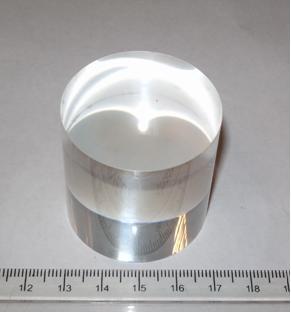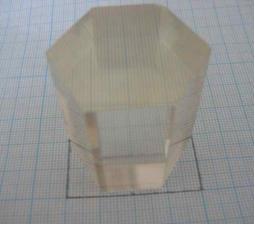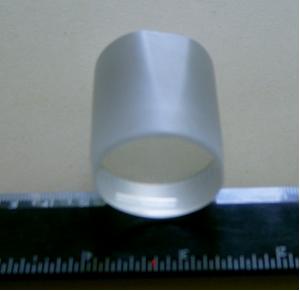Scintillators
We have a productive research programme studying scintillator
materials at cryogenic temperatures in order to identify and develop
scintillators for CRESST and
EURECA
The CRESST II detector modules are cryogenic phonon scintillation
detectors, which use the combination of the phonon and scintillation
light signals to classify events as electron or nuclear recoils on an
event by event basis.
Cryogenic
phonon-scintillation detectors are particularly
promising as they allow us to use a range of different
target materials within one setup. Therefore if we detect a positive
signal, we can verify if it is due to WIMP interactions by checking if
the event rate scales with the absorber atomic mass, in the way expected for the WIMP-nuclear scattering cross-section.We require scintillation materials
with the following properties:
- High scintillation light yield at low temperatures.
- Good optical and mechanical surface properties.
- High radiopurity.
- Suitable thermodynamic characteristics.
Unlike conventional applications of scintillators, rare event
searches do not require scintillators with fast decay times. Therefore
we can use scintillators which are traditionally considered "slow".
There are a large number of compounds such as doped materials: NaI(Tl), CaF2(Eu), Lu2SiO5(Ce),
and LaCl3(Ce), that are known to be good scintillators at
room temperatures, but their light yield decreases substantially with
temperature, thereby making them unsuitable for
cryogenic applications. In addition, some materials exhibit
an excessively high level of intrinsic radioactive background, or are
hygroscopic. This makes them unsuitable for the use in rare event
searches. However our research covers a number of
good cryogenic scintillators including
CaWO4, ZnWO4 and CaMoO4 (pictured).To study the
scintillation process of a material, and identify possible
improvements, we take extensive measurements of the temperature dependence of the decay
times and light yield. To achieve this we have developed the
multi-photon counting (MPC) technique to measure the scintillator parameters over a wide range of
temperatures.
Scintillator
materials also have many other applications, for example in industry and medicine.
We are collaborating with industrial partners such as
Hilger Crystals. This science-driven initiative already resulted in
the optimisation of traditional scintillators and the development of new
materials for a variety of applications. The health sector, especially
medical diagnostics, can benefit significantly from new scintillation
detectors with enhanced light yield operating at ambient and/or low
temperatures.
|
|




